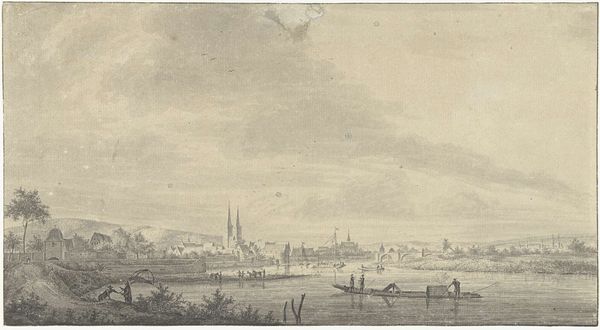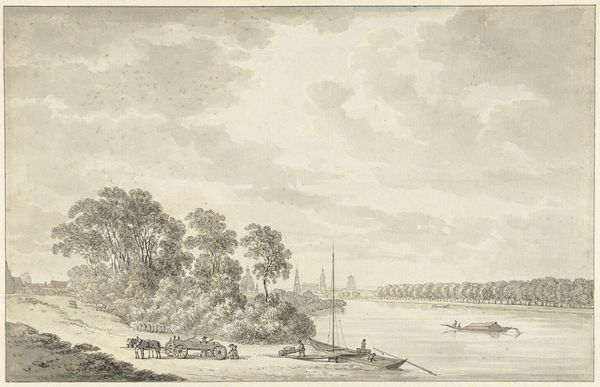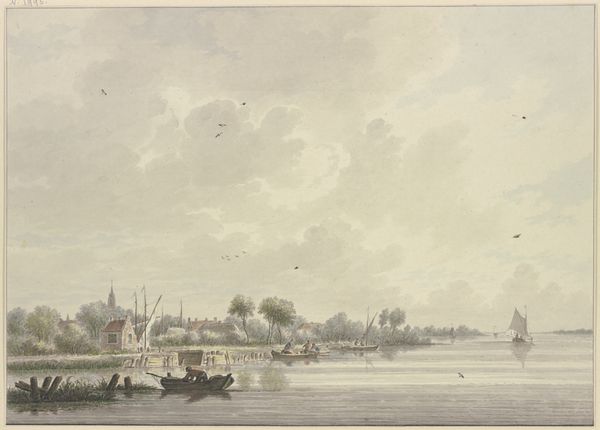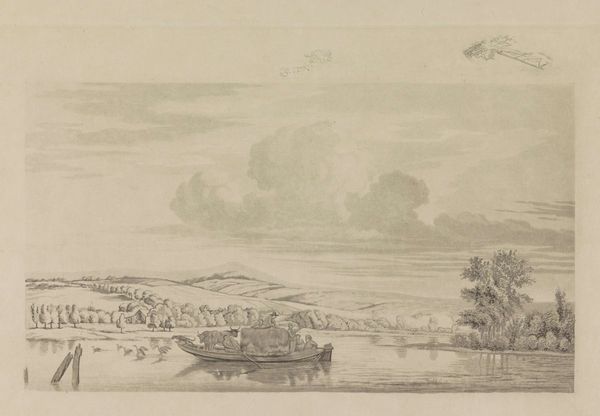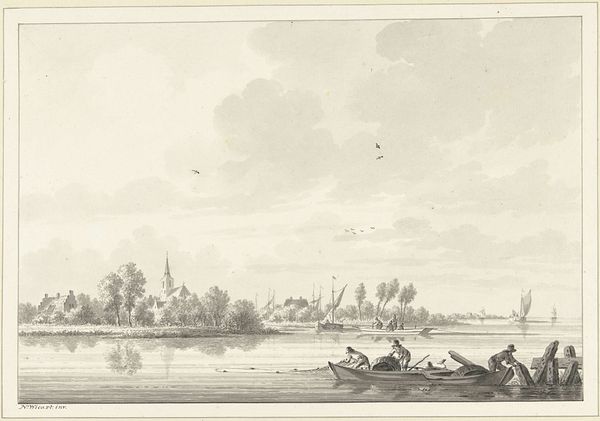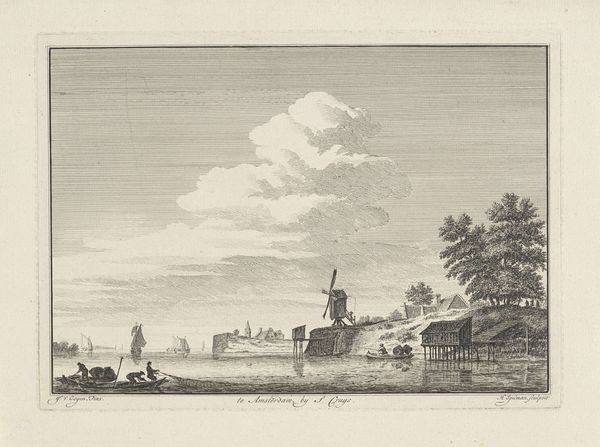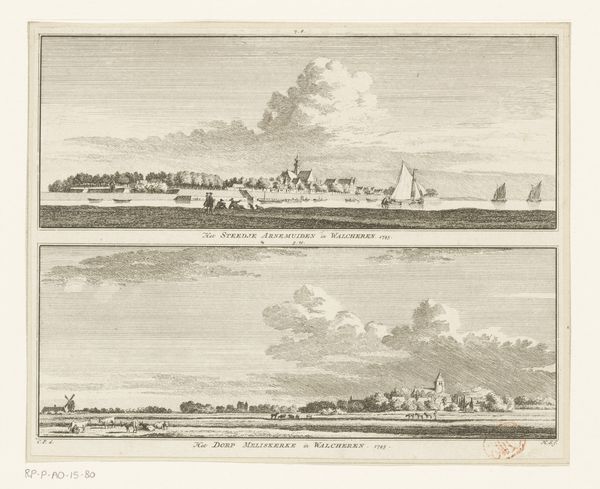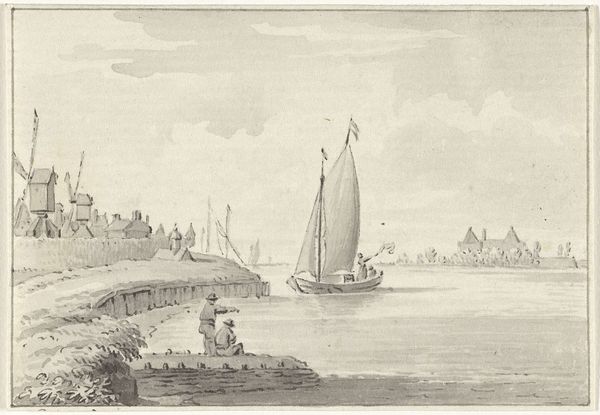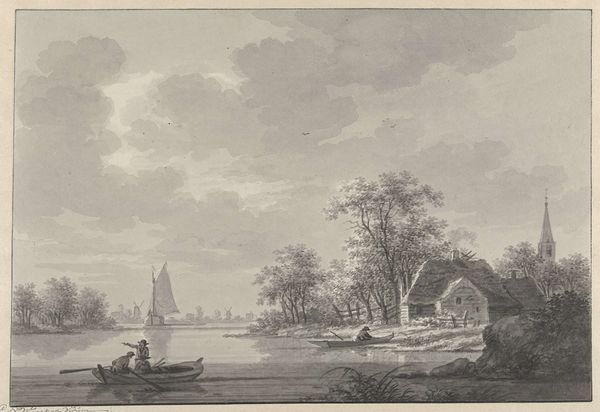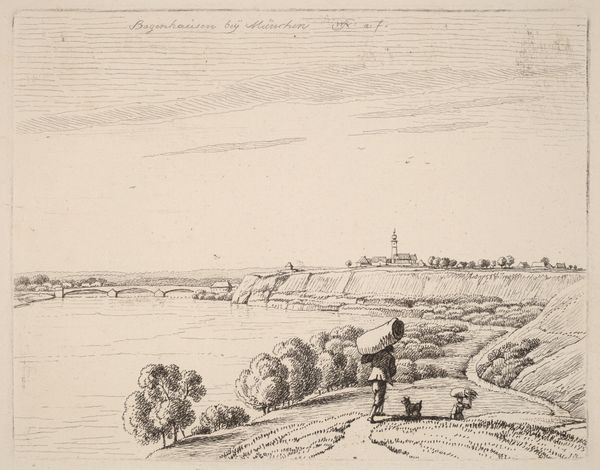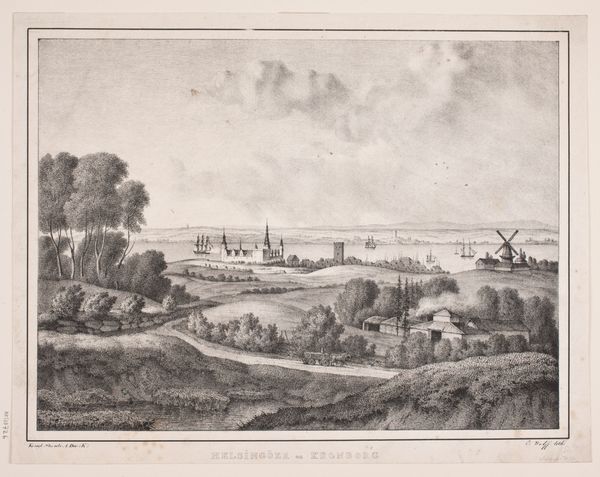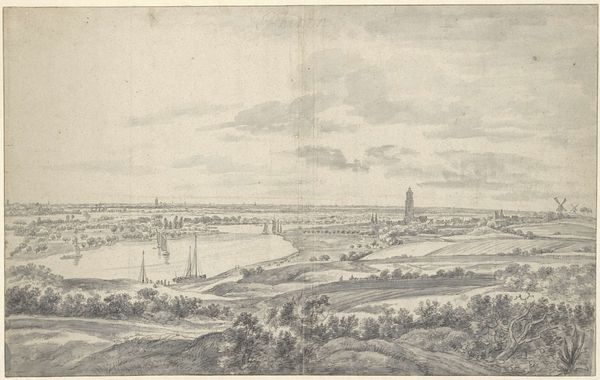
drawing, pencil
#
pencil drawn
#
drawing
#
dutch-golden-age
#
pencil sketch
#
landscape
#
study drawing
#
charcoal drawing
#
pencil drawing
#
pencil
#
watercolor
#
realism
Dimensions: height 252 mm, width 360 mm
Copyright: Rijks Museum: Open Domain
Editor: This is Jacobus Theodorus Abels' "Landschap bij Maarssen," created sometime between 1813 and 1866 using pencil and watercolor. The subdued tones create such a calm, almost melancholic feeling. What draws your eye when you look at it? Curator: Initially, I’m struck by the masterful use of line and the delicate balance of tonal values to evoke a sense of depth and atmospheric perspective. Note how Abels guides the viewer's eye— from the immediate foreground interest of the foliage, storks, and nest, back through the middle ground elements, toward the subtle treatment of the distant horizon. The work also contains dynamic visual components: The careful placement of the windmill interrupts an otherwise uniform landscape. Editor: That's a fascinating observation about visual balance. What would you say the choice of material contributes? Curator: The restrained palette—monochromatic with slight nuances of brown—works in harmony with the detailed pencil work. Abels emphasizes form and texture, suggesting a study, or preparation for a more elaborate finished painting. Consider also how the softness of watercolor is strategically combined with distinct details offered by the precision pencil, particularly with that incredible, up-close nest. Editor: I see what you mean. So, it’s not necessarily about accurately depicting the scene but about something else...perhaps evoking an emotional response, or achieving balance? Curator: Indeed. By stripping away the more vibrant hues and concentrating on form and composition, Abels invites the viewer to engage with the intrinsic qualities of the landscape. This emphasis foregrounds line and form. Editor: I never considered the restriction of color as a method to emphasize composition. I'll definitely keep that in mind moving forward. Thanks for pointing that out!
Comments
No comments
Be the first to comment and join the conversation on the ultimate creative platform.
